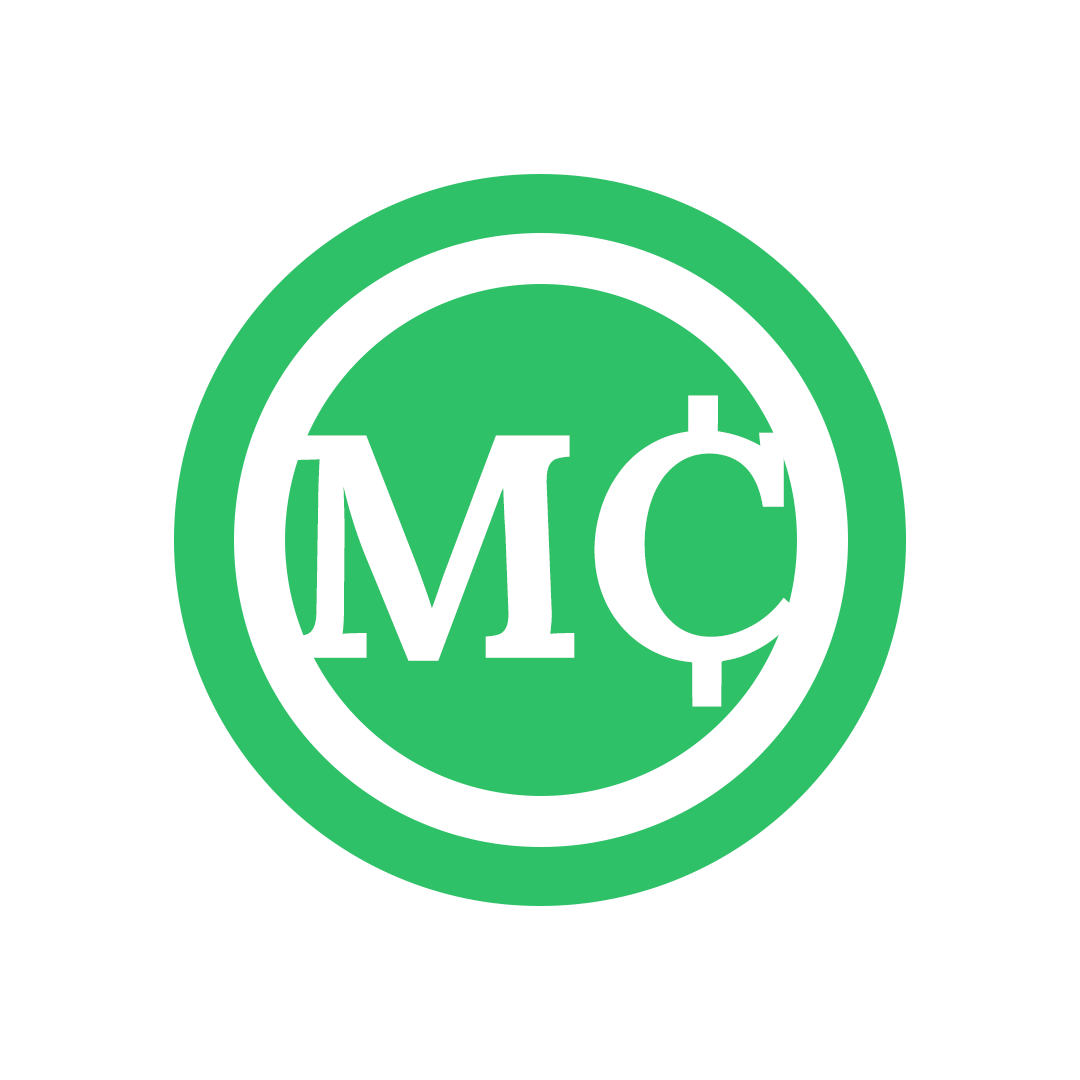Anúncios
What if one small change to how you search could uncover roles you never saw before? This Job opportunities guide shows a clear way to work with today’s hiring climate. You’ll get a simple plan that fits your skills and values.
Many people find the best results when they pair large boards like LinkedIn, Indeed, and Glassdoor with targeted company career pages. You’ll learn to reverse-search pages, avoid ghost listings, and use reputable information and resources such as CareerOneStop at 1-877-US2-JOBS or [email protected].
This introduction is practical and honest: results vary by your profile, effort, and context. Over the next sections you’ll follow a step-by-step process to clarify goals, expand beyond narrow titles, network naturally, and shape resumes and outreach that highlight your skills. Think of this as education, not a guarantee, and a sustainable way to move your career forward over time.
Introduction: why a Job opportunities guide matters right now
Right now, hiring is more selective, and a clear, skills-first approach helps you reach the right roles faster. Market cycles are slower and many roles never hit major boards. That means a focused process makes your time and effort pay off.
Today’s market dynamics and what they mean for your search
Large applicant pools make it hard to stand out. Hiring managers often get many resumes with weak fit. You gain traction when you show concise evidence of impact and match responsibilities closely.
How this section helps you focus on impact, skills, and fit
This section explains practical steps so you can find roles beyond titles. Searching by outcomes and deliverables uncovers more options at companies that post early on their career pages.
- Be skills-led: look for responsibilities you can prove with outcomes.
- Reverse-search: monitor company pages and newsletters for early listings.
- Network smartly: connect with people who can give context and warm intros.
Use this process to balance quality and quantity in your career search. The goal is steady progress toward roles that match your abilities and ambitions.
Clarify your goals, values, and constraints before you apply
Set clear criteria now so you don’t waste time later on roles that won’t work. Start small: name your target role, the industry you prefer, and the kind of impact you want to make.
Keep this practical. List must-haves first (compensation range, commute or remote work, schedule, visa needs), then note nice-to-haves so you can decide fast when time matters.
- Define impact: pick outcomes you want to own—improving customer metrics, cutting costs, or shipping features—and track examples with numbers.
- Translate values: turn mentorship, clear goals, or ethical products into specific interview questions and red flags.
- Map industries: choose 3–5 industries where your skills transfer and mark which are hiring now.
- Spot gaps: pre-read descriptions to find recurring skills and fill small gaps with quick projects or courses.
Finish with a short target statement of your desired role and outcomes. Keep a living document of criteria so your resume and LinkedIn stay focused and your decisions stay objective.
Find roles beyond job titles to expand your options
Search by what you can do, not only by the label someone used before. Start each search with a clear responsibility or outcome—for example, “manage cross-functional launches,” “analyze large datasets,” or “coordinate field operations.”
Search by skills and responsibilities, not past titles
Run queries using those responsibility phrases on boards and company sites. Then filter listings for matching description lines and required competencies.
Identify transferable skills with real examples
List skills and pair roles across sectors:
- Stakeholder communication — product manager, client success lead
- SQL querying — data analyst, BI developer
- Project scheduling — construction coordinator, marketing producer
- Event logistics — operations coordinator, nonprofit program manager
- Process mapping — quality analyst, supply chain planner
Map related job titles using O*NET and CareerExplorer
Use O*NET to capture tasks, tools, and keywords to mirror in your resume. Try CareerExplorer to reveal adjacent titles you might miss when switching field or company. Keep a running list of 15–25 related titles and build mini case studies that show outcomes and scale.
Reassess weekly: track which skills lead to callbacks and refine your search terms and saved descriptions for better matches.
Reverse-search companies and career pages you admire
Focus on companies you respect and monitor their own channels for roles that never reach job boards. This gives you early visibility and a chance to apply before large applicant pools form.
Start practical and repeatable checks. Build a target list of 20–40 firms—ones you’d call a great place to work—and visit their careers pages weekly.
- Subscribe to company newsletters and follow social channels. Many jobs are posted there first.
- Skim press releases and product updates to spot upcoming hires and set alerts for matching roles.
- Track team pages and org charts to infer growth areas at each role company on your shortlist.
- Use saved filters on careers portals to get alerts by function, location, or level and reduce manual checks.
- Record contact emails from career pages and keep a simple tracker of roles, dates, and follow-ups so you don’t miss application windows.
Compare language on company pages to what appears on broader boards and mirror that wording in your resume. That small match improves relevance and increases the chance you get noticed early.
Use job boards strategically, not exclusively
Treat broad listing sites as a market map, then dig into niche boards where fewer applicants compete.
Large aggregators like LinkedIn and Indeed help you see salary ranges and common requirements quickly.
Balance large boards with niche, industry-specific boards
Use big sites to map demand, then pivot to specialty sites and cause-specific listings. Niche boards often surface unique roles and can lead to a much better hit rate on interviews.
Avoid ghost jobs and outdated postings
Always check the posting date, confirm the listing on the company’s careers page, and review employee activity on LinkedIn to avoid stale or ghost listings.
Set up alerts and keywords that match your skills
- Create saved searches with skill-based keywords and get daily or weekly alerts so you apply early.
- Combine board applications with direct company submissions to ensure your materials are in the employer’s system.
- Track which boards and university career-service resources consistently yield interviews and prune the rest.
Leverage U.S. career resources you can trust
Tap federal and local tools to verify market data and plan quick, targeted upskilling for the field you want.
CareerOneStop is a central hub for reliable information and practical help. Use it to explore occupations, training programs, and labor market data tied to your location and company types you target.
Call 1-877-US2-JOBS (TTY 1-877-889-5627) if you need direct guidance on jobs, training, or unemployment benefits. Email [email protected] for help using site tools like skills assessments and resume templates.
- Cross-check salary ranges and demand signals before negotiating or prioritizing applications.
- Review required licenses or certifications for your field and plan short courses where needed.
- Use linked American Job Centers for workshops, resume reviews, and local recruiting events.
- Download checklists and templates to structure applications and track progress.
- Pair CareerOneStop data with O*NET details to refine your target role list and local strategy.
If applicable, leverage veteran, youth, and reentry resources to access tailored supports and employer pathways.
Build a network you’ll actually use
A practical network grows from small, regular actions—begin with people you trust.
Start with familiar contacts and tell them what kinds of roles you’re exploring and why. Let know a few specific outcomes you can deliver so they have a clear sense of fit.
Ask for advice, not jobs. That lowers pressure and invites candid feedback that often uncovers unposted openings.
Show up in relevant communities
Join industry meetups, conferences, and online groups like Slack, Discord, or LinkedIn communities. Attend regularly so people start to recognize your name and work.
Ask for introductions and follow up
When you request an intro, offer a short blurb others can forward. If you researched someone, mention a project you came across and ask one or two focused questions.
- Begin with people you already trust—friends, classmates, former colleagues—and explain what you’re looking for.
- Share wins and learning so people remember you when relevant roles appear.
- Keep simple records of outreach dates and next steps so your efforts compound over time.
Follow up with gratitude and updates after conversations. Offer value in return—an article, a contact, or a quick favor—to keep the relationship reciprocal.
Do thoughtful cold outreach that gets replies
When you reach out, lead with a specific project you admired—this shows you did your homework.
Short, specific, and respectful messages increase the chance of a reply. Start with one line that names the person and a project you came across at their company.
Templates and principles that work
Be concise: open with a reference to real work, state a clear purpose, and offer a 15–20 minute ask. Say something like, “I’m seeking advice on first steps into X—could we do a 20-minute call?”
- Research first: note one detail about the person or team so the message feels personal.
- Share proof: include a single link and one-line context that match the topic.
- Make it easy: close with two or three time windows and offer to reschedule.
- Follow up once: send a polite reminder a week later, then move on to protect goodwill.
When you can, ask one quick question they can answer by message. That low-effort ask often yields a reply and can lead to a call.
Log outreach dates and outcomes so you refine your way of writing over time. Always thank them and share a brief takeaway if they give advice—this builds your reputation with people and supports future hiring conversations.
Create a presence that attracts hiring managers and recruiters
A clear online presence turns passive clicks into inbound conversations with the people who hire. Update your LinkedIn headline and About to mirror key words from the role description you target. Keep each line outcome-focused so readers see impact fast.
Optimize LinkedIn with keywords, impact, and a clear headline
Lead with results. Use a concise, outcome-based headline and a short summary that matches role language. Add measurable examples in the Featured section so a hiring manager can scan achievements in seconds.
Build a simple portfolio or personal website showcasing outcomes
Show 3–5 brief case studies: problem, actions, results. Make your resume-style Featured items or site cards easy to read on mobile. Keep contact info visible and test links quarterly.
Engage in communities to create inbound opportunities
Join industry groups and comment thoughtfully. Regular, useful posts and repurposed portfolio snippets help you stand out to peers and recruiters over time.
- Skills: list proven capabilities and refresh them each quarter.
- Resume: mirror role language in your Featured items for quick relevance.
- Career: signals like open-to-work and job preferences should match your target.
- Industry: contributions in niche groups increase discoverability.
- Ask two peers to review your profile for clarity and fit to help stand out when they search.
Craft resumes and cover letters that stand out
Lead with outcomes and numbers so your resume reads like a short case study. Hiring managers scan quickly; make the top of your document show impact in plain terms.
Use bullet points focused on impact, numbers, and scope
Start bullets with strong verbs and end with concrete numbers—revenue, users, time saved, or percent change.
Place key numbers in the first one or two bullets for each role so reviewers see results at a glance.
Keep formatting clean for ATS and hiring managers
Use a single-column layout, standard fonts, and no images so ATS parses your file reliably. Save as PDF named Firstname_Lastname_Resume.pdf.
Lead with recent, relevant experience and mirror critical keywords from the job description naturally in headings and bullets.
Write a cover letter that connects your experience to the role
Keep the cover letter short—three to four brief paragraphs that tie your top results to the role’s needs and address any transitions.
- Open with one line that names the role and a relevant result.
- Show two short examples that match the description and include numbers.
- Close with a clear next step and your contact info.
Create a master resume and tailor a copy for each application in 10–15 minutes by swapping keywords and the top two bullets. Ask a peer to read it for 15 seconds; if they can’t say what you do, tighten the language.
Optimize for applicant tracking systems without gaming them
Simple formatting and natural wording help your resume get parsed correctly and reach a recruiter. Many employers use ATS to screen early, so aim for clarity rather than tricks. The goal is fair parsing and honest alignment with the role.
Mirror critical keywords from the job description naturally
Start by mapping. Paste the job description into a notes doc and highlight repeated skills and tools. Reflect the truly relevant ones where you can show proof.
- Use standard headers—Summary, Experience, Skills, Education—so ATS parses sections reliably.
- Avoid tables, images, text boxes, and odd fonts that break parsing; stick to PDF or DOCX per instructions.
- Write naturally; keyword stuffing flags poor fit and wastes reviewer time.
- Include context for each role—team size, scope, stakeholders—to help both ATS and hiring managers judge fit.
- Test uploads on an ATS simulator or a major board and keep tailored versions with a simple change log.
For a practical walkthrough on optimizing a resume without shortcuts, see this short piece on how to optimize resume for applicant tracking systems.
Treat applications as a strategic numbers game
Treat each application as a deliberate move in a wider plan rather than a one-off shot in the dark. Use a simple weekly rhythm so you keep momentum without burning time.

Balance quality and quantity
Set modest targets: aim for 6–10 tailored applications per week. That keeps your numbers moving while protecting time for clear customization.
- Split your pipeline: 70–80% strong-fit roles, 20–30% stretch roles to widen options.
- Run experiments: tweak keywords, lead bullets, and examples to see what earns replies.
- Score postings: rank each posting by skills match, interest, growth, and pay so you prioritize top scorers.
Don’t mass-apply with a generic resume, and don’t spend days perfecting one submission. Build reusable snippets for common achievements so tailoring takes minutes, not hours.
Track response rates: log source and role type, then double down on channels that work. Pair each application with one networking action—an intro or a short message—to increase visibility.
Review your pipeline weekly and adjust the way you apply. Over time, your refined process will improve interview hits and reveal which numbers truly matter for the roles you want.
Interview with confidence and clarity
Walk into interviews prepared to show how your work created measurable change and how you think through hard choices. A clear plan helps you answer quickly and learn about the people you might work with.
Prepare stories in STAR format and explain your reasoning
Build 6–8 STAR stories that highlight your most relevant experience and measurable impact. Keep each story to a 60–90 second core and expand only when asked.
Explain decisions: say why you chose a path, note trade-offs, and show how you worked with others to get results.
Two-way conversations: assess the team, role, and company
Prepare focused questions about team norms, role scope, and decision cadence. Treat interviews as a mutual fit check—listen for signals about collaboration and leadership style.
Research the company’s products and recent news and tie your examples to their context to boost credibility.
Follow-up notes that reinforce fit and impact
- After each round, send a concise follow-up that thanks interviewers and restates one clear example of relevant impact.
- Be honest about gaps and explain how you’d ramp quickly; that shows ownership.
- Log tough questions and refine stories before the next interview so your answers improve with each conversation.
References, assignments, and background checks
References, take-home tasks, and background checks are often the final steps that shape an offer. Prepare them thoughtfully so you present consistent proof of your experience and how you work on a team.
Choose references who can speak to results and collaboration
Select people who worked with you closely and can describe specific outcomes, how you meet deadlines, and how you fit into a team.
- Brief them: share the role description and two or three achievements you want highlighted.
- Confirm availability: agree on windows so the hiring timeline does not stall.
- Say thanks: update references and express appreciation—strong ties help with future jobs.
Handle assignments and checks ethically
Clarify scope and time expectations for take-home tasks. If a test would take unreasonable hours, propose a shorter live exercise as an alternative.
Protect your current employer’s confidential data. Keep samples anonymized and explain process and outcomes rather than sharing proprietary files.
If a background check is coming, prepare accurate dates and titles. Small discrepancies usually slow hiring more than they disqualify candidates.
For more on preparing references and what to expect during checks, see this concise overview on reference checks.
Negotiate offers thoughtfully before you accept
Receiving an offer starts a discussion about fit, pay, and future growth. Take a moment to research and plan so you can respond respectfully and confidently.
Research ranges, ask for the employer’s range, and focus on needs
Check market ranges across multiple sources, then ask the hiring managers for the company’s range to anchor the talk.
Frame requests around role scope, responsibilities, and expected outcomes. This lands much better with decision-makers than stating personal worth.
Consider total compensation, growth, and work-life balance
Look beyond base pay. Consider bonus, equity, benefits, learning budgets, PTO, and flexibility. These elements affect your career and daily work.
- Don’t always accept the first offer—clarify title, leveling, and review timelines that speed future increases.
- If base pay is limited, ask about sign-on pay, early reviews, or stipends to bridge gaps.
- Confirm all details in writing: cash, equity units and vesting, start date, and any relocation or visa support.
Share competing timelines honestly and ask for reasonable time to review. Practice a short script so you stay calm and collaborative. Whatever you decide, keep relationships warm—companies evolve, and you may reconnect later.
Track your pipeline, iterate your process, and protect your energy
Track progress the same way you track a project: log stages like research, applied, interview, and offer so you see forward motion.
Keep a compact tracker you can open in seconds. That clarity saves time and helps you choose where to focus energy each week.
Review weekly what works—boards, referrals, cold outreach—and tweak your process based on response rates. Treat each application as an experiment: change one variable, record results, repeat.
Schedule focused blocks for applications, networking, and mock interviews to avoid context switching. Use quick post-mortems after rejections to refine keywords, examples, or how you frame experience next time.
- Rotate outreach so your network warms while interviews progress.
- Set small goals—two tailored applications and one conversation a day builds steady momentum.
- Protect rest—exercise, hobbies, and downtime keep you clear-headed and resilient.
Ask mentors quarterly for candid feedback and celebrate process wins—clearer bullets, better replies, stronger stories. Periodically reassess your target list of jobs and companies to keep your career direction aligned with what you learn.
Job opportunities guide
A short, repeatable rhythm—alerts, one networking ask, and a resume tweak—keeps momentum and reduces wasted time.
Use a blended approach: scan job boards, set alerts, and visit company career pages weekly. This mix catches early listings and reduces blind applications.
Map skills to 15–25 related roles with O*NET and CareerExplorer to widen your funnel without losing fit. Keep a simple list you can copy into resumes and messages.
- Keep materials chronological: make your resume and LinkedIn easy to scan, with outcomes first so you help stand out in quick reviews.
- Pair each application with a network action: one note, intro, or follow-up improves visibility and context.
- Use vetted resources: turn to CareerOneStop for local data, training links, and verified support when you need help.
- Track the numbers: monitor applications, interviews, and conversion by source to see what truly pays off.
- Keep outreach concise: short, specific cold messages referencing concrete work earn replies faster.
Revisit your criteria monthly and use a light portfolio of outcomes and links to let recruiters self-qualify you quickly. Negotiate offers with total compensation and growth in mind.
Conclusion
Keep a simple, repeatable process so each step teaches you and moves your career forward. Build weekly habits that balance targeted applications, networking, and learning.
Keep materials scannable: list achievements in chronological order and use outcome-focused bullets. Make one clean resume and a few tailored resumes you can adapt in minutes.
Treat every outreach and mock interview as practice for stronger interviews and clearer stories. Ask mentors or career services for feedback and honest perspective when you need it.
If progress slows, focus on controllables: targeted search actions, steady skills work, and kind persistence. Use trusted resources like CareerOneStop for verified help, and stay realistic about what you can control. Small gains add up—remember where you’re going and keep people in your corner.



